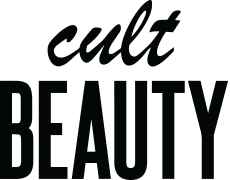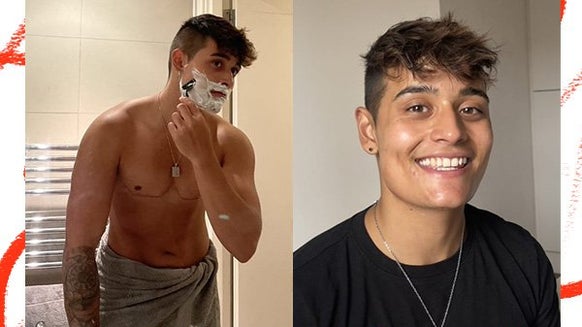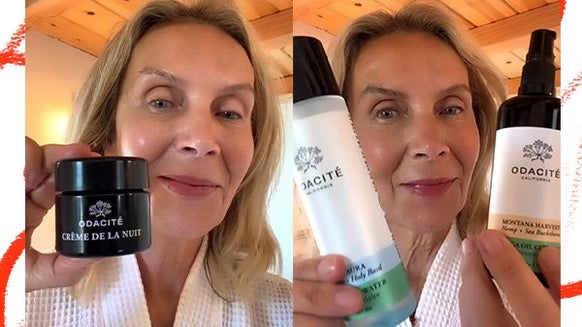Our Beyond Skin Deep series amplifies individual skin stories, encouraging exploration and sharing of all experiences and journeys. Here, we sit down with Humanrace’s Chief Dermatologist, Dr Elena Jones, to discuss her relationship with her skin, late melanoma diagnosis in people of colour and the importance of SPF.
Cult Beauty: What has your skin care journey looked like and can you talk us through your relationship with your skin?
Dr Elena Jones: During my early teen years, acne woke me up to the fact that I needed to start taking care of my skin. I was fortunate that my mom was able to find me a dermatologist in New York City who really seemed to understand my skin and its needs. What impressed me most at that time is that he asked about my family history and our ethnic background, and he used this information to guide his treatment routine. He understood that acne in skin of colour could cause longer lasting discolouration, so he made sure to educate me on three basic tenets: how to take care of my skin by following a simple routine, how not to pick at my skin and how consistency is key. I felt as if he listened to my concerns, and I trusted he would choose skin care ingredients that would aid in treating and preventing acne. Once I had a regular routine to follow, my confidence soared. My routine has always been rooted in simple yet effective steps of cleansing, exfoliating, moisturising, and following up with sunscreen. During my teen and young adult years, it also consisted of specific prescriptions to help with my acne.
Overall, my relationship with my skin has been a journey of increasing acceptance. I have never been a make up person, primarily because I have never taken the time to learn its proper application. Yet, I want to present my best self. So, any pimple or persistent dark spot during my teen years pushed me to follow my doctor's routine. We’ve carried this philosophy of the importance of a routine with our Humanrace product line, which is rooted in three simple steps of cleansing, exfoliating and moisturising.
CB: How has your relationship with your skin been impacted by those around you?
EJ: I am not of the social media era, so it was the faces of my friends or celebrities at the time that had the most impact on how I thought my face should look, from pressure to having ‘perfect’ skin from what we saw in the media or having skin that was heavily made up. I never judged my friends who felt as if they needed to mask their skin behind make up because I knew that was not my desire or skill set. I am loving the trends we are currently seeing with some of the younger generations, which is embracing their natural skin and focusing on skin care over make up. Ultimately, it’s all about what makes you happiest and most comfortable.
CB: What do you wish your younger self knew about your skin and self-acceptance?
EJ: It's important for my younger self to know that skin care, skin health and skin beauty is a journey that has peaks and valleys but with a consistent, simple routine, the desired journey is attainable.
CB: How has your relationship with your skin changed since being a dermatologist?
EJ: Learning the science behind skin care has served to focus and hone me in on effective skin care ingredients that must be added to my daily routine. Today, I am using the Humanrace’s 7D Retrograde Gel Cleanser daily, exfoliating 2-3 days a week with the Lotus Enzyme Exfoliator and finishing with our 7D Mystifying Moisturizer (which I like to call a moisture magnet for the skin). For my nighttime routine, I apply a topical retinoid which helps with my skin renewal to maintain texture, tone, and help fade fine lines. In the morning, I always apply an SPF 30 after moisturising, which is a crucial step for lasting skin health!
CB: What advice do you repeatedly find yourself giving to your patients?
EJ: My mantra to patients is to give yourself time and allow yourself grace in your skin care journey. Skin care takes consistency and persistence.
CB: And what advice have you received that’s stuck with you?
EJ: The advice that has resonated with me the most is to apply sunscreen repeatedly and do not forget your hands and neck. It’s so important to protect your skin from the sun’s UVA and UVB rays. The easiest way to distinguish the difference between the two is from the last letter: UVA rays can cause pre-mature skin ageing such as fine lines, wrinkles and loss of skin elasticity whereas UVB rays can cause skin burning, which leads to sunburns, skin discolouration and certain types of skin cancers (i.e. melanoma). Even if it is cloudy outside, the sun still emits those UVA/UVB rays, so sunscreen is essential!
CB: In your line of work, you’ve spoken out about late melanoma diagnosis in people of colour and how this puts them more at risk. Can you talk us through your research into this topic and whether you’ve had any experience with this personally?
EJ: It is still widely believed that people of colour do not need to protect themselves from the sun. This belief, coupled with limited access to dermatologists, let alone dermatologists comfortable with treating skin of colour, has led to skin cancers — in particular, melanomas — being missed in a timely fashion. Melanoma represents 1-8% of cancers in skin of colour and the majority of these melanomas arise on the palm of hands and soles of the feet. Yet, they are diagnosed at later stages leading to lower survival rates. This speaks to the need for better education and access.
CB: With this in mind, what are the signs to look out for to spot skin cancer earlier, especially for people of colour?
EJ: We must check our entire bodies monthly. Check for the ‘A, B, C, D, E's’ of moles.Asymmetry – does one side of the mole look like the other?Borders – are the edges of the mole jagged or irregular?Colour – is the mole very black or does it have multiple colours (red, black, white, blue) all in one mole?Diameter – is the size of the mole bigger than an eraser head?Evolving – is the mole changing, does it itch or bleed, and/or is it new or growing rapidly?
CB: What can be done to help prevent skin cancer from developing?
EJ: Sun protection (hats, sunglasses, long sleeves, sunscreen) and sun avoidance – limiting time in the sun especially during the most sun intense hours of 10am-4pm – are paramount to preventing skin cancer development.
CB: What SPFs would you recommend, particularly to people of colour?
EJ: Any broad-spectrum sunscreen that protects against UVA and UVB rays with an SPF of at least 30 is ideal. Frequent application is essential – every two hours if outdoors, every four hours depending on screen time. With the rise of technology, we are in front of screens now more than ever, and screens can emit blue light that can cause damage to the skin barrier. Luckily, sunscreen also helps to combat blue light. I like brands such as La Roche Posay and SuperGoop!, however, the best sunscreen is the one that you will wear consistently.
READ MORE ABOUT OUR BEYOND SKIN DEEP CAMPAIGN >>> 




